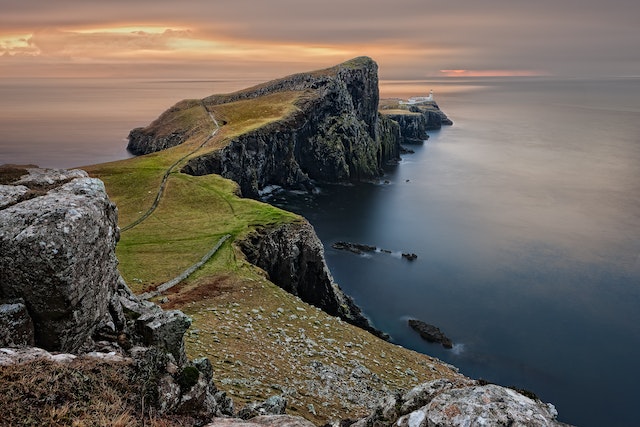Scotland is a country that is part of the United Kingdom. It is located in the northern part of Great Britain and has a population of around 5.5 million people. Scotland is known for its breathtaking landscapes, rich history, and unique culture.
Geographically, Scotland is a diverse country that is home to stunning mountain ranges, beautiful coastlines, and rolling hills. It is also home to over 790 islands, including the famous Isle of Skye. Scotland is a country that is proud of its natural beauty and is home to some of the most stunning landscapes in the world.
Key Takeaways
- Scotland is a country that is part of the United Kingdom and has a population of around 5.5 million people.
- Scotland is known for its breathtaking landscapes, rich history, and unique culture.
- Geographically, Scotland is a diverse country that is home to stunning mountain ranges, beautiful coastlines, and rolling hills.
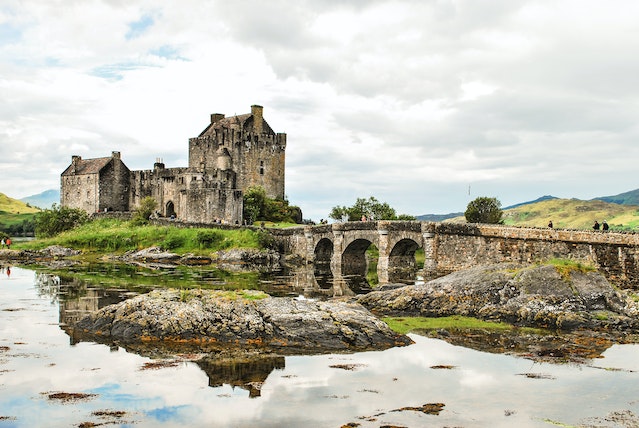
Geography and Landscapes
Highlands and Lowlands
Scotland is a country that is known for its diverse geography and landscapes. The Highlands and Lowlands are two of the most distinct regions in Scotland. The Highlands are located in the north of the country and are known for their rugged terrain, mountains, and valleys. The Lowlands, on the other hand, are located in the south of Scotland and are characterized by rolling hills and flat plains.
The Highlands are home to some of the most stunning landscapes in Scotland, including the Cairngorms National Park and Ben Nevis, the highest mountain in the UK. The Lowlands, on the other hand, are home to the River Clyde, which runs through Glasgow, and the River Tay, which runs through Perth.
Islands and Lochs
Scotland is also home to many islands and lochs, which are an important part of the country’s geography and culture. The Orkney and Shetland Islands are located in the north of Scotland and are known for their rugged coastlines, ancient ruins, and unique wildlife. Westray and Papa Westray are two of the smallest islands in the Orkney archipelago, with populations of just a few hundred people.
Loch Ness is one of the most famous lochs in Scotland and is known for its legendary monster, Nessie. The loch is located in the Highlands and is surrounded by stunning scenery.
Cities and Towns
Scotland is also home to many vibrant cities and towns, each with its own unique character and history. Edinburgh, the capital city, is known for its stunning architecture, including Edinburgh Castle and the Royal Mile. Glasgow, Scotland’s largest city, is known for its vibrant music and arts scene, as well as its impressive Victorian architecture.
Other notable cities and towns in Scotland include Aberdeen, Inverness, and Stirling. The Southern Uplands and Central Lowlands are home to many charming towns and villages, each with its own unique history and culture.
Overall, Scotland’s geography and landscapes are diverse and stunning, making it a popular destination for tourists and nature lovers alike.
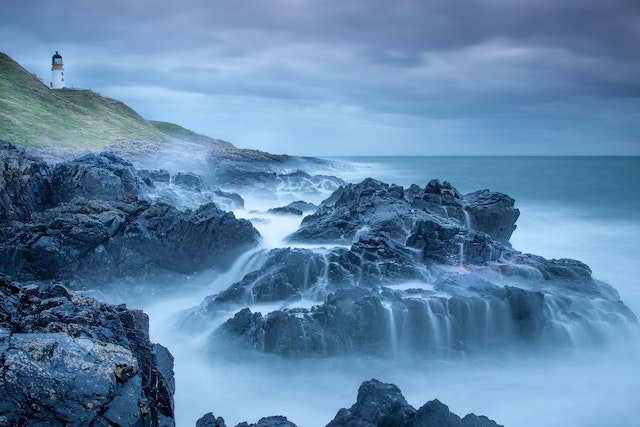
History
Scotland has a rich and varied history that spans thousands of years. From the ancient Picts and Romans to the Scottish Enlightenment and the Industrial Revolution, Scotland has played a significant role in shaping the world we know today.
Ancient History
Scotland’s ancient history is shrouded in mystery, with many of the details lost to time. However, it is known that the Picts, a group of Celtic tribes, were the first inhabitants of Scotland. They lived in the area from around 300 BC until the arrival of the Romans in AD 43. The Romans occupied Scotland for several centuries, but they were never able to fully conquer the Picts.
Act of Union
In 1707, Scotland and England signed the Act of Union, which united the two countries into one kingdom. The Act of Union was controversial at the time, and many Scots opposed it. However, it paved the way for the creation of the United Kingdom, which remains to this day.
Industrial Revolution
Scotland played a significant role in the Industrial Revolution, which began in the late 18th century. The country was home to many important inventors and engineers, including James Watt, who developed the steam engine. The Industrial Revolution transformed Scotland’s economy and led to the growth of cities like Glasgow and Edinburgh.
Overall, Scotland’s history is a fascinating and complex tapestry of different cultures, people, and events. From the ancient Picts and Romans to the Scottish Enlightenment and the Industrial Revolution, Scotland has left an indelible mark on the world.
People and Culture
Language and Literature
Scotland is a multilingual country, with English being the most widely spoken language. However, Scottish Gaelic is also an important language, particularly in the Highlands and Islands. The language has a rich literary tradition, with many famous writers and poets producing works in Scottish Gaelic.
Robert Burns is perhaps the most famous Scottish poet, known for his use of the Scots language. His works, such as “Auld Lang Syne” and “To a Mouse,” are still widely read and celebrated today.
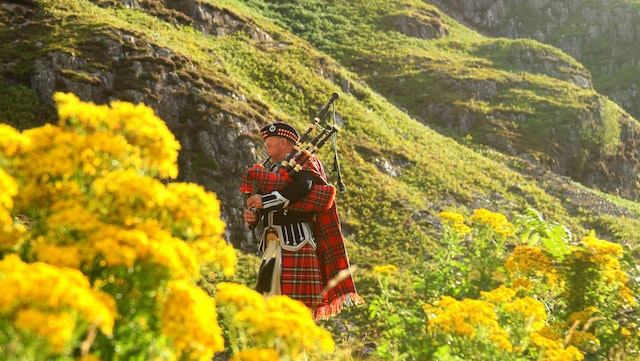
Traditions and Events
Scotland is known for its rich cultural traditions and events. The Highland Games, held throughout the country, are a celebration of Scottish culture and feature events such as caber tossing, tug-of-war, and the Great Highland Bagpipe competition.
The Scottish kilt is also a symbol of Scottish culture, and is often worn at formal events and weddings. Tartan, the traditional Scottish plaid, is also an important symbol of Scottish identity and is often used in clothing and accessories.
Food and Drink
Haggis, a traditional Scottish dish made from sheep’s heart, liver, and lungs, is perhaps the most famous Scottish food. It is often served with neeps and tatties (turnips and potatoes) and is a staple of Scottish cuisine.
Whisky, particularly Scotch whisky, is also an important part of Scottish culture. The country is home to many famous distilleries, and whisky is often enjoyed neat or in cocktails.
Scottish breakfasts, which often include items such as black pudding, bacon, eggs, and haggis, are also a popular meal in Scotland.
Famous Personalities
Scotland has produced many famous personalities over the years who have made significant contributions to various fields. Here are some of the most notable ones:
Andy Murray: Born in Glasgow, Andy Murray is a former professional tennis player who is considered one of the greatest British players of all time. He has won numerous titles, including three Grand Slam singles titles and two Olympic gold medals.
Sir Chris Hoy: Sir Chris Hoy is a retired Scottish track cyclist who won six Olympic gold medals and eleven World Championship titles during his career. He is one of the most successful Olympic cyclists of all time.
James Watt: James Watt was a Scottish inventor and mechanical engineer who played a crucial role in the development of the steam engine. His improvements to the steam engine made it more efficient and helped to power the Industrial Revolution.
Alexander Graham Bell: Alexander Graham Bell was a Scottish-born inventor and scientist who is best known for inventing the telephone. He also made significant contributions to the fields of speech and hearing, and his work laid the foundation for modern telecommunications.
These are just a few of the many famous personalities who have come from Scotland and left their mark on the world.
Tourism
Scotland is a popular tourist destination, attracting millions of visitors each year. The country’s rich history, stunning natural beauty, and vibrant cities make it an ideal place to visit.
Edinburgh is one of Scotland’s most popular tourist destinations. The city is home to many historic landmarks, including Edinburgh Castle, Holyrood Palace, and the Royal Mile. Visitors can also explore the city’s many museums and art galleries, including the National Museum of Scotland and the Scottish National Gallery.
Glasgow is another popular destination for tourists. The city is known for its vibrant music scene, with many famous musicians hailing from the area. Visitors can also explore the city’s many museums and art galleries, including the Kelvingrove Art Gallery and Museum and the Gallery of Modern Art.
Aberdeen is a popular destination for those interested in outdoor activities. The city is located on the coast and is home to many beautiful beaches. Visitors can also explore the city’s many parks and gardens, including Duthie Park and Hazlehead Park.
Perth is a historic city that is home to many beautiful buildings and landmarks. Visitors can explore the city’s many historic sites, including Scone Palace and St. John’s Kirk. The city is also known for its many parks and gardens, including the Riverside Park and North Inch Park.
Dundee is a vibrant city that is home to many cultural attractions. Visitors can explore the city’s many museums and art galleries, including the V&A Dundee and the McManus Art Gallery and Museum. The city is also known for its many parks and gardens, including Camperdown Park and Broughty Castle.
One of Scotland’s most famous tourist attractions is the Loch Ness Monster. Visitors can explore the area around Loch Ness and learn about the legend of the monster. The area is also known for its stunning natural beauty, with many opportunities for hiking and outdoor activities.
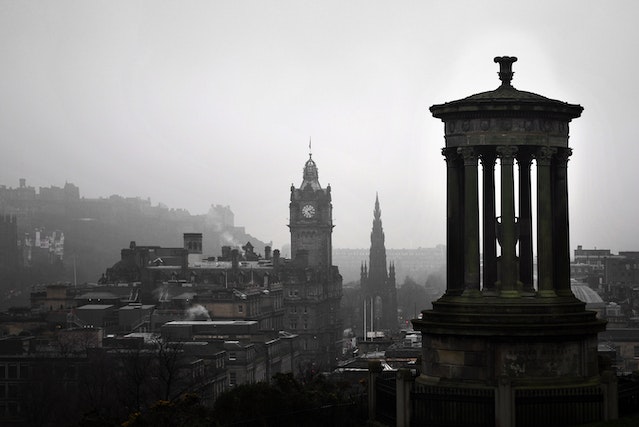
Skara Brae is another popular tourist attraction in Scotland. The prehistoric village is located on the island of Orkney and is one of the best-preserved Neolithic settlements in Europe. Visitors can explore the site and learn about life in prehistoric Scotland.
Overall, Scotland has much to offer tourists, from its vibrant cities to its stunning natural beauty and rich history. Whether visitors are interested in outdoor activities, cultural attractions, or historic landmarks, Scotland has something for everyone.
Inventions and Innovations
Scotland has been the birthplace of many inventions and innovations that have changed the world. Here are a few notable examples:
- Telephone: The telephone was invented by Alexander Graham Bell, who was born in Edinburgh, Scotland. Bell’s invention revolutionized communication and paved the way for the modern telecommunications industry.
- Sherlock Holmes: The fictional detective Sherlock Holmes was created by Sir Arthur Conan Doyle, who was born in Edinburgh, Scotland. Holmes has become one of the most famous and enduring characters in literature and popular culture.
- Bell Rock Lighthouse: The Bell Rock Lighthouse is located off the coast of Angus, Scotland. It was designed and built by Robert Stevenson, a Scottish civil engineer, and is considered to be one of the greatest engineering feats of the 19th century. The lighthouse has been in operation since 1811 and is still in use today.
- Insulin: Insulin, a hormone that regulates blood sugar levels, was first discovered by Sir Frederick Banting and Charles Best at the University of Toronto in Canada. However, Banting was born in Alliston, Ontario, Canada, to Scottish parents, and Best’s father was born in Scotland. The discovery of insulin has had a profound impact on the treatment of diabetes.
- Steam engine: The steam engine was invented by James Watt, a Scottish engineer and inventor. Watt’s improvements to the steam engine made it more efficient and practical, and it became a key component of the Industrial Revolution.
- Penicillin: Penicillin, the first antibiotic, was discovered by Sir Alexander Fleming, a Scottish biologist. Fleming’s discovery revolutionized medicine and has saved countless lives.
These are just a few examples of the many inventions and innovations that have come out of Scotland. The country’s history of creativity and ingenuity continues to inspire new ideas and breakthroughs today.
Economy and Industry
Scotland has a diverse economy with a mix of industries, including oil and gas, financial services, tourism, and manufacturing. The country’s economy has been growing steadily in recent years, with a GDP of £170 billion in 2022.
The financial services sector is a significant contributor to Scotland’s economy, with the Bank of Scotland being one of the country’s largest banks. The bank was founded in 1695 and is now part of Lloyds Banking Group. It provides a range of financial products and services to individuals, businesses, and corporations.
The manufacturing industry is also an essential part of Scotland’s economy, with a focus on industries such as aerospace, electronics, and pharmaceuticals. The Greenock area of Scotland is particularly well-known for its shipbuilding industry, which has been a significant part of the region’s economy for many years.
Scotland has also been investing in renewable energy, with a particular focus on wind power. The country has some of the best wind resources in Europe and is home to many wind turbine manufacturers and suppliers.
Overall, Scotland’s economy and industry are diverse and continue to grow, with a focus on innovation and sustainability.
Sports
Scotland has a rich history in sports, with some of the world’s most popular sports originating from the country. Here are some of the most notable sports in Scotland:
Football
Football, or soccer as it is known in some countries, is the most popular sport in Scotland. The country has a long-standing rivalry between its two biggest teams, Celtic and Rangers, which has led to some of the most passionate and intense games in the sport’s history. Scotland also has its own national football team, which competes in international tournaments such as the World Cup and the European Championships.
Golf
Scotland is known as the home of golf, with the sport originating in the country in the 15th century. Some of the world’s most famous golf courses are located in Scotland, including the Old Course at St Andrews, Prestwick Golf Club, and Carnoustie. The country also hosts the Open Championship, one of the four major tournaments in professional golf.
Overall, sports play a significant role in Scottish culture, and the country has produced many talented athletes throughout its history.
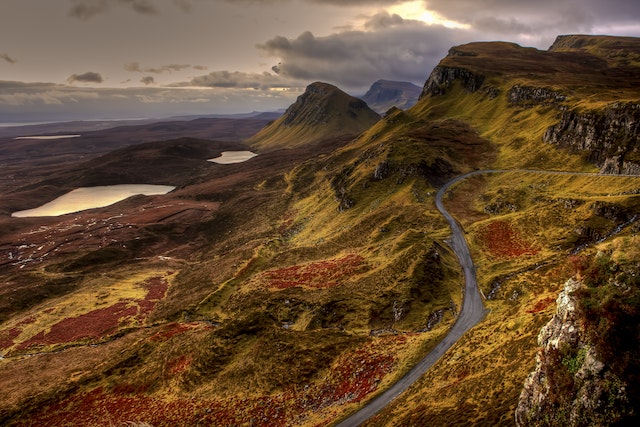
Myths and Legends
Scotland has a rich history of myths and legends that have been passed down through generations. While some of these stories have been debunked, others continue to captivate people’s imaginations.
One of the most well-known Scottish myths is the legend of the Loch Ness Monster, also known as Nessie. Despite numerous sightings and expeditions, there is no concrete evidence to prove the existence of this elusive creature. However, many people still believe in Nessie and the mystery surrounding her.
Another popular Scottish myth is the unicorn, which is Scotland’s national animal. While unicorns are often associated with fantasy and fiction, they have a long history in Scottish folklore. In fact, the Royal Coat of Arms of Scotland features two unicorns, one on either side of the shield.
Scotland is also home to a variety of other mythical creatures, such as kelpies, selkies, and faeries. Kelpies are shape-shifting water spirits that are said to inhabit Scotland’s lochs and rivers. Selkies are seal-like creatures that can transform into humans. Faeries, on the other hand, are mischievous beings that are said to live in the countryside.
While these myths and legends may seem fantastical, they have played an important role in Scottish culture and identity. They continue to inspire art, literature, and even tourism in Scotland today.
Political Structure
Scotland is a country that is part of the United Kingdom and the larger entity of Great Britain. The Kingdom of Great Britain was formed in 1707 by the union of the Kingdom of Scotland and the Kingdom of England. Scotland has its own devolved parliament, the Scottish Parliament, which was established in 1999 under the Scotland Act of 1998.
The Scottish Parliament is located in the capital city of Edinburgh and has the power to make laws in areas that are devolved to Scotland, such as health, education, and justice. The Parliament has 129 Members of the Scottish Parliament (MSPs), who are elected by the people of Scotland every five years using a proportional representation system.
Scotland is a constitutional monarchy, which means that the monarch, currently Queen Elizabeth II, is the head of state. However, the monarch’s role is largely ceremonial, and the day-to-day affairs of the country are managed by the Scottish Government. The Scottish Government is led by the First Minister, who is appointed by the monarch on the recommendation of the Scottish Parliament.
The Scottish Government has a cabinet, which is made up of the First Minister and other ministers who are responsible for various areas of government, such as finance, health, and education. The Scottish Government is accountable to the Scottish Parliament and must seek its approval for its policies and legislation.
In summary, Scotland has a devolved political structure that gives it a degree of autonomy within the United Kingdom. The Scottish Parliament has the power to make laws in areas that are devolved to Scotland, and the Scottish Government is responsible for managing the day-to-day affairs of the country. Scotland is a constitutional monarchy, with the monarch’s role largely ceremonial, and the Scottish Government is accountable to the Scottish Parliament.
Miscellaneous Facts
Scotland is a country with a rich history and culture. Here are some miscellaneous facts about Scotland that may pique your interest:
Interesting Facts: Scotland is home to the world’s oldest tree, the Fortingall Yew, which is estimated to be between 2,000 and 3,000 years old. Scotland is also known for its famous monster, the Loch Ness Monster, which has been a topic of debate and speculation for decades.
Gene: Scotland has a diverse gene pool, with a mix of Celtic, Nordic, and Anglo-Saxon ancestry. This can be seen in the physical features of the Scottish people, who range from fair-skinned and red-haired to dark-haired and olive-skinned.
Black: Scotland has a small but vibrant black community, with many people of African and Caribbean descent living in the country. Black Scots have made significant contributions to Scottish culture and society, including in the arts, music, and sport.
Mixed: Scotland is becoming increasingly diverse, with a growing number of mixed-race families and communities. This is reflected in the country’s cuisine, fashion, and music, which draw on a range of cultural influences.
Left: Scotland is known for its left-leaning politics, with many Scots supporting socialist and progressive policies. This is reflected in the country’s strong public healthcare system, free university education, and commitment to renewable energy.
Alba: Scotland is known as Alba in Scottish Gaelic, one of the country’s official languages. Gaelic is still spoken by a small but significant minority of Scots, and its influence can be seen in the country’s place names, music, and literature.
Frequently Asked Questions
What are some historical facts about Scotland?
Scotland has a rich and fascinating history, with evidence of human habitation dating back to around 8,000 BC. The country has been inhabited by various Celtic tribes, and was later conquered by the Romans in the 1st century AD. In the Middle Ages, Scotland was a powerful independent kingdom, and its history is marked by numerous battles and conflicts, including the Wars of Scottish Independence in the 14th century. Scotland joined with England in 1707 to form the United Kingdom.
What are some interesting facts about Scottish culture?
Scottish culture is rich and diverse, with a strong tradition of music, dance, and storytelling. The country is famous for its bagpipes, kilts, and haggis, as well as its whisky and beer. Scottish literature is also renowned, with famous writers including Robert Burns, Sir Walter Scott, and Robert Louis Stevenson.
What are some famous landmarks in Scotland?
Scotland is home to many famous landmarks, including Edinburgh Castle, Stirling Castle, and the Palace of Holyroodhouse. Other popular attractions include Loch Ness, the Isle of Skye, and the Cairngorms National Park. The country is also famous for its many historic and picturesque towns and villages, such as St Andrews, Inverness, and Oban.
What is the national animal of Scotland?
The national animal of Scotland is the unicorn. This mythical creature has been a symbol of Scotland since the 12th century, and is said to represent purity, innocence, and power.
What is the traditional Scottish dress called?
The traditional Scottish dress is called a kilt. This garment is made from wool and is worn by men as a symbol of Scottish heritage and identity. Kilts are often worn with a sporran (a small pouch worn around the waist), a sgian dubh (a small knife worn in the sock), and a jacket or sweater.
What is the meaning behind the Scottish flag?
The Scottish flag, also known as the Saltire, is a white diagonal cross on a blue background. According to legend, the flag was first used by the Scottish army in the 9th century, and is said to represent the cross of St Andrew, who is the patron saint of Scotland.

